Science Serving Humanity
The mission of UVA's Wallace H. Coulter Center for Translational Research is to support research projects that are explicitly translational in nature and in doing so, develop and validate models of translation that can be widely adopted.
UVA's Wallace H. Coulter Center for Translational Research awards approximately $1 million annually to biomedical engineering faculty and research collaborators from the School of Medicine, the School of Engineering, and other areas across the University. These co-investigators work together to develop innovative technologies that address unmet clinical needs, improve health care, and advance toward commercially viable products.
History and Timeline
Over the past decade, by funding dozens of projects, the Coulter Center has fostered a strong culture of translational research at UVA.
The Wallace H. Coulter Foundation began its translational research programs in 2001 launching its first pilot programs. The Foundation and the universities adapted the product development practices of industry for use in academia. In what came to be known as the “Coulter Commercialization Process”, it is a guide to accelerate academic innovations using business practices that can be implemented by any university. Although formulaic in the identification of key success elements, each program has the freedom to operate within its own ecosystem and leverage their competencies for implementation. In addition, job process requirements for the four strategic stakeholders were created.
At the core of the Coulter Commercialization Process is the desire to identify ideas, developed from interactions between clinicians and biomedical engineers, for solutions to unmet clinical needs. The projects are managed to the point where risk is reduced enough to attract professional follow-on funding, the metric of success. Although follow-on funding and commercialization are not the primary goals of the Program, they are critical steps to bringing innovations to patients.
- Collaboration between engineers and clinicians with an identified clinical need and a proposed experimental plan (project). A program director with biomedical industry experience to coordinate the program. A resourced and committed Licensing and Ventures partnership and an Oversight Committee (OC) composed of the translational research stakeholders.
- Each project required commercialization analysis, intellectual property protection, plans for regulatory approvals, reimbursement strategies, and achieving technical milestones.
2001
The Wallace H. Coulter Foundation launches its first Translational Partner pilot program.
2005
The Wallace H. Coulter Foundation announces that the University of Virginia is one of 10 universities that will form the first phase of the Coulter Translational Partnership Program. The foundation provides UVA $5.9 million during this five-year period.
2006
The UVA-Coulter Partnership makes its first awards totaling $400,000. These include the use of adipose stem cells for chronic wound healing and the real-time cardiac stress testing.
2009
First commercial licenses for technologies funded by Coulter.
2011
The University of Virginia teams with the Coulter Foundation to create a $20 million endowment to foster collaboration between biomedical engineers and clinicians leading to new technologies to improve patient care and human health.
2023
The Partnership Program grows into a Translational Research Center.
First Startup Company
2010
GID Group
Research on autologous, adipose derived stem cells by Dr. Adam Katz and Shayn Peirce-Cottler has led to critically important therapies for diabetics. "Dr. Katz and his collaborators have developed potentially game-changing technology for the treatment of diabetic wounds and other common afflictions," said Miette H. Michie, executive director and CEO of the U.Va. Patent Foundation. The work was licensed to a startup co-founded by Dr. Katz and colleagues.
Investments
2017
UVA-Coulter start-up HemoShear enters into an agreement with Takeda Pharmaceutical Company that could be worth as much as $470 million. The two companies will use HemoShear’s proprietary disease modeling platform to discover and develop novel therapeutics for liver diseases.
TAKEDA AND HEMOSHEAR THERAPEUTICS EXTEND EXCLUSIVE DRUG DISCOVERY PARTNERSHIP IN LIVER DISEASES
Stago Group acquisition of HemoSonics
HTTPS://WWW.MASSDEVICE.COM/STAGO-CLOSES-HEMOSONICS-BUY/
2018
Dexcom, TypeZero, and the University of Virginia have had a longstanding, productive relationship in developing important technologies for diabetes management, including inControl for integration with both automated insulin delivery (“AID”) and smart pens. The companies share a consistent vision to improve the lives of people with diabetes through innovation.
DEXCOM ACQUIRES TYPEZERO TECHNOLOGIES
UVA Coulter’s Early Technology is Licensed
2019
A UVA team developed a training kit for otoscopy, a commonly performed procedure in the ear. The first of its kind, the team partnered with the medical education company Nasco. Through this relationship, the team has manufactured and distributed this important product to clinical training programs around the world.
2020 Partnership with Siemens
The Department of Biomedical Engineering is a world leader in MRI research. With Coulter funding as well as support from the NIH, Siemens, and the UVA Medical School, Craig Meyer, John Mugler, and others have developed cutting-edge imaging techniques for the heart, lung, brain, and other parts of human anatomy. In partnership with Siemens, a world leader in medical imaging, the project teams are able to implement their life saving technologies to the clinic.
HTTPS://ENGINEERING.VIRGINIA.EDU/NEWS/2016/04/LONGSTANDING-MRI-RELATIONSHIP-SIEMENS
Commitments
$34M Coulter Center Endowment
$1M Invested in 6 - 8 projects per year
122 Projects funded over the last 18 years
$1.4B Follow-on funding from 25 Coulter-funded start-ups
Our University Partners
These on-Grounds partners are helping to ensure that promising technologies developed by its faculty enter the marketplace, where they can benefit citizens of the Commonwealth, the nation, and the world.
UVA Licensing and Ventures Group
The LVG reviews proposals for the Coulter Center Oversight Committee and provides input to Coulter researchers as well as connections to industry partners who can help shape the development of their intellectual property.
UVA Licensing and Venture Group Seed Fund
UVA's $10 million Seed Fund managed by the Licensing and Ventures Group has invested in a number of start-ups based on innovations developed with Coulter funding.
UVA's Offices of Research
School of Engineering | School of Medicine
UVA's Coulter Center for Translational Research coordinates with the Offices of Research in the School of Engineering and Applied Science and the School of Medicine to secure support and funding for Coulter Center researchers.